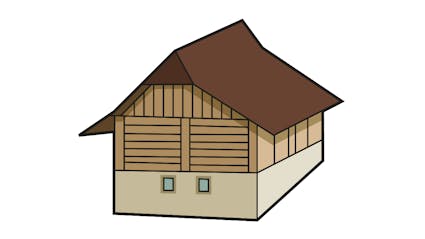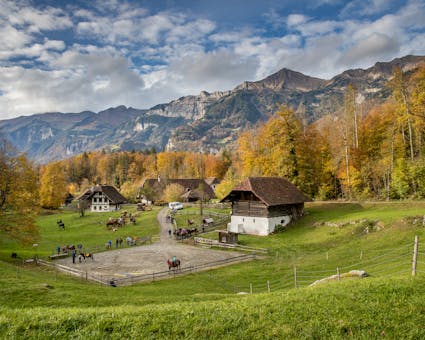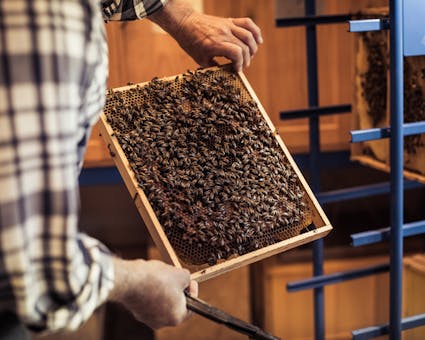341 – Barn from Faulensee Berne, 1702
The hay mow was on the upper floor of the barn; the loosely set wall infillings provided air circulation.

Livestock below, hay above
The lower part of the building was built in quarrystone masonry. Here the livestock was quartered. Twice a day a farmhand filled the wooden manger with hay. The hay mow was on the upper floor; the loosely set wall infillings provided air circulation. The animals below, the hay above – the classic division of this type of building.

Atypical elegance
The outer form of the building is in contrast to the ordinary interior: the roof is covered in tiles and has a quarter hip more common in dwellings. The profiled cornerposts and braces are striking, the stone-framed stall openings nearly excessive. The impressive appearance of the barn has its reason: it belonged to the farm domain of Abraham von Graffenried and was therefore part of a patrician estate. This special status is reflected in the architecture.
Tough transport
Remote farms, steep slopes and long distances from the hayfields to the farms – there were many reasons for not taking hay to the main barns. In addition, the lanes were few and rough, exacting lots of time and hard work in transport by horse and wagon. It was therefore reasonable to leave the hay in dispersed hay sheds at the harvest sites. In winter the farmers led their livestock from one field barn to the next and left it there until the hay was used up.
Exhibition: Bees and beekeeping
The exhibition in the Barn from Faulensee BE deals with many aspects of the complex lives of bees, and traces the history of the development of beekeeping. Bees have always played a key role in farming, not just because they produce honey, wax and other natural products such as royal jelly, but above all because of the role they play in blossom pollination. Honey bees are the major pollinators of fruit and berry crops and of wild flowers.
Some of the bee colonies are housed in the Barn from Faulensee, and the Ballenberg beekeepers there regularly demonstrate the various tasks associated with beekeeping.

Ballenberg
Swiss Open-Air Museum
Museumsstrasse 100
CH-3858 Hofstetten bei Brienz
Opening hours
11 April to 27 October 2024
10 am to 5 pm daily